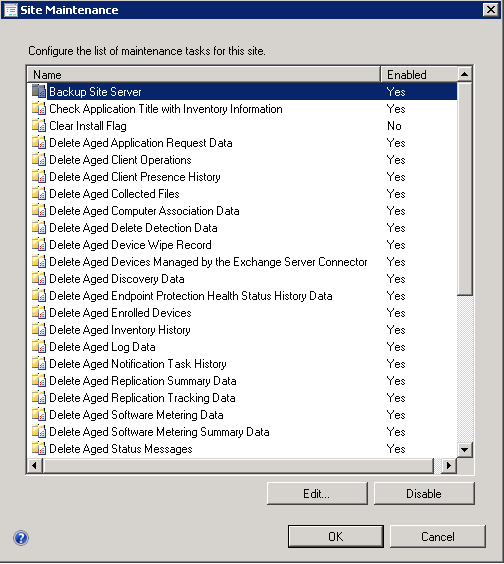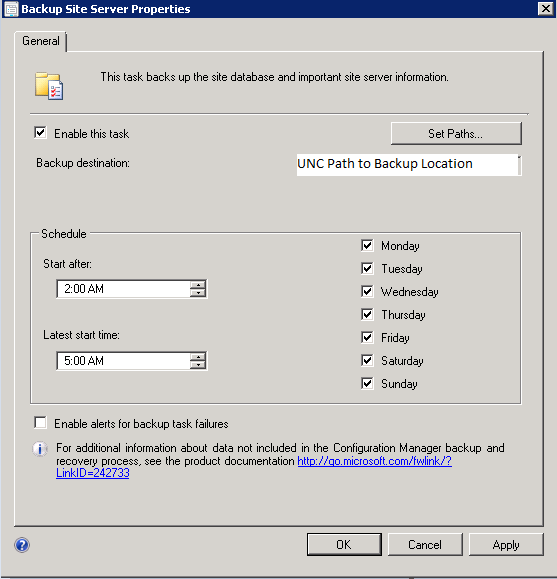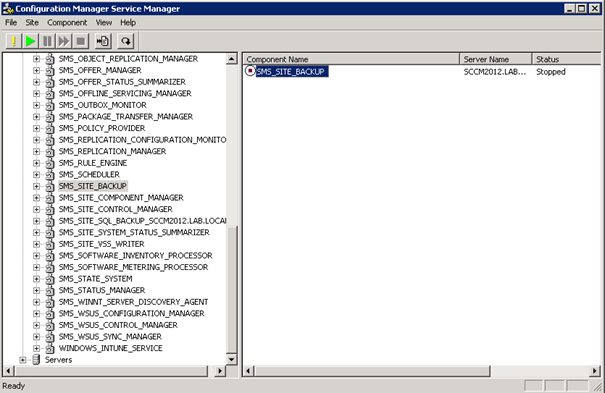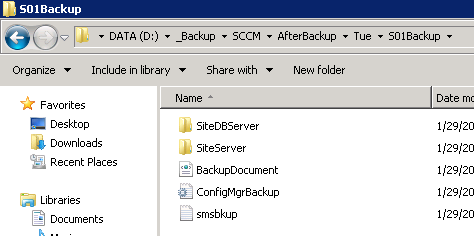SCCM by Davis: “Rod Trent posted an update in the group System Center Configuration Manager 2012: Announcement: Configuration Manager Documentation Library […]” plus 19 more |  |
- Rod Trent posted an update in the group System Center Configuration Manager 2012: Announcement: Configuration Manager Documentation Library […]
- Rod Trent posted an update in the group Microsoft Management Summit: Blank Sunday sessions issue fixed for the MMS 2013 Schedule Builder
- Rod Trent wrote a new post, Blank Sunday sessions issue fixed for the MMS 2013 Schedule Builder
- Rod Trent posted an update in the group Microsoft TechEd: Must-have app for MMS 2013 and TechEd 2013
- Rod Trent posted an update in the group Microsoft Management Summit: Must-have app for MMS 2013 and TechEd 2013
- Rod Trent wrote a new post, Must-have app for MMS 2013 and TechEd 2013
- Rod Trent wrote a new post, Nifty new RSS options in Outlook 2013
- Arista Integrates EOS With OpenStack in SDN Push
- Rob Marshall wrote a new post, Community Server and BOT registrations
- Tony became a registered member
- Johnny de Jong became a registered member
- Danner became a registered member
- Sprint Merger Complicated by U.S. Distrust of Huawei, ZTE
- Mitch Rick posted an update in the group System Center Orchestrator/Opalis: Just got our Production SCORCH server online after a few […]
- Mitch Rick joined the group System Center Orchestrator/Opalis
- Rod Trent posted an update in the group System Center Orchestrator/Opalis: Orchestrator at MMS 2013
- Rod Trent posted an update in the group Microsoft Management Summit: Orchestrator at MMS 2013
- Rod Trent posted an update in the group System Center Jobs: Infographic: What not to wear to an interview
- Kelverion wrote a new post, Orchestrator at MMS 2013
- Rod Trent wrote a new post, Infographic: What not to wear to an interview
| Posted: 28 Mar 2013 05:02 PM PDT |
| Posted: 28 Mar 2013 05:00 PM PDT |
| Rod Trent wrote a new post, Blank Sunday sessions issue fixed for the MMS 2013 Schedule Builder Posted: 28 Mar 2013 04:58 PM PDT You may have noticed that when choosing the .ics calendar option in the MMS 2013 Schedule Builder that no Sunday sessions were being listed. This has now been fixed! If you've already downloaded the .ics and […] Comments: 0 |
| Rod Trent posted an update in the group Microsoft TechEd: Must-have app for MMS 2013 and TechEd 2013 Posted: 28 Mar 2013 04:53 PM PDT |
| Posted: 28 Mar 2013 04:53 PM PDT |
| Rod Trent wrote a new post, Must-have app for MMS 2013 and TechEd 2013 Posted: 28 Mar 2013 04:51 PM PDT |
| Rod Trent wrote a new post, Nifty new RSS options in Outlook 2013 Posted: 28 Mar 2013 04:27 PM PDT |
| Arista Integrates EOS With OpenStack in SDN Push Posted: 28 Mar 2013 03:00 PM PDT The networking vendor, which also is adding OpenFlow extensions to the OS, is looking to improve network programmability in cloud environments. |
| Rob Marshall wrote a new post, Community Server and BOT registrations Posted: 28 Mar 2013 09:22 AM PDT |
| Tony became a registered member Posted: 28 Mar 2013 12:13 PM PDT Comments: 0 |
| Johnny de Jong became a registered member Posted: 28 Mar 2013 11:59 AM PDT Comments: 0 |
| Danner became a registered member Posted: 28 Mar 2013 11:47 AM PDT Comments: 0 |
| Sprint Merger Complicated by U.S. Distrust of Huawei, ZTE Posted: 28 Mar 2013 11:30 AM PDT Sprint's deal with Softbank is expected to include a condition that the U.S. government has equipment-purchasing approval. |
| Posted: 28 Mar 2013 10:35 AM PDT Just got our Production SCORCH server online after a few month's of runbook development/testing in our lab!! Love this stuff! Comments: 1 |
| Mitch Rick joined the group System Center Orchestrator/Opalis Posted: 28 Mar 2013 10:34 AM PDT Comments: 0 |
| Rod Trent posted an update in the group System Center Orchestrator/Opalis: Orchestrator at MMS 2013 Posted: 28 Mar 2013 10:22 AM PDT |
| Rod Trent posted an update in the group Microsoft Management Summit: Orchestrator at MMS 2013 Posted: 28 Mar 2013 10:22 AM PDT |
| Posted: 28 Mar 2013 10:15 AM PDT |
| Kelverion wrote a new post, Orchestrator at MMS 2013 Posted: 28 Mar 2013 10:14 AM PDT In the recent MyITForum poll it appears everyone wants to find out about Orchestrator at MMS 2013. http://myitforum.com/myitforumwp/2013/03/13/mms-2013-available-sessions-howd-we-do/ Well good news, come and […] Comments: 0 |
| Rod Trent wrote a new post, Infographic: What not to wear to an interview Posted: 28 Mar 2013 10:11 AM PDT |
| You are subscribed to email updates from SCCM by Davis To stop receiving these emails, you may unsubscribe now. | Email delivery powered by Google |
| Google Inc., 20 West Kinzie, Chicago IL USA 60610 | |















